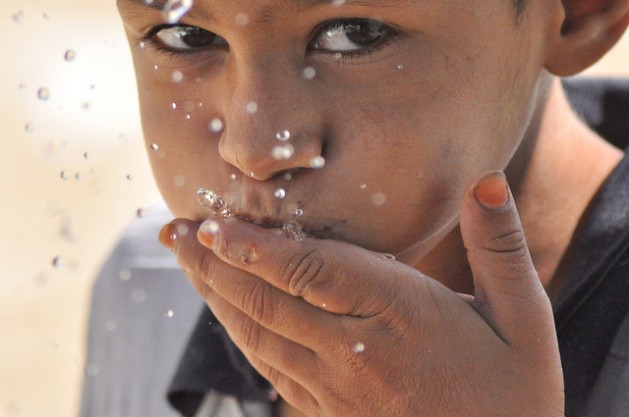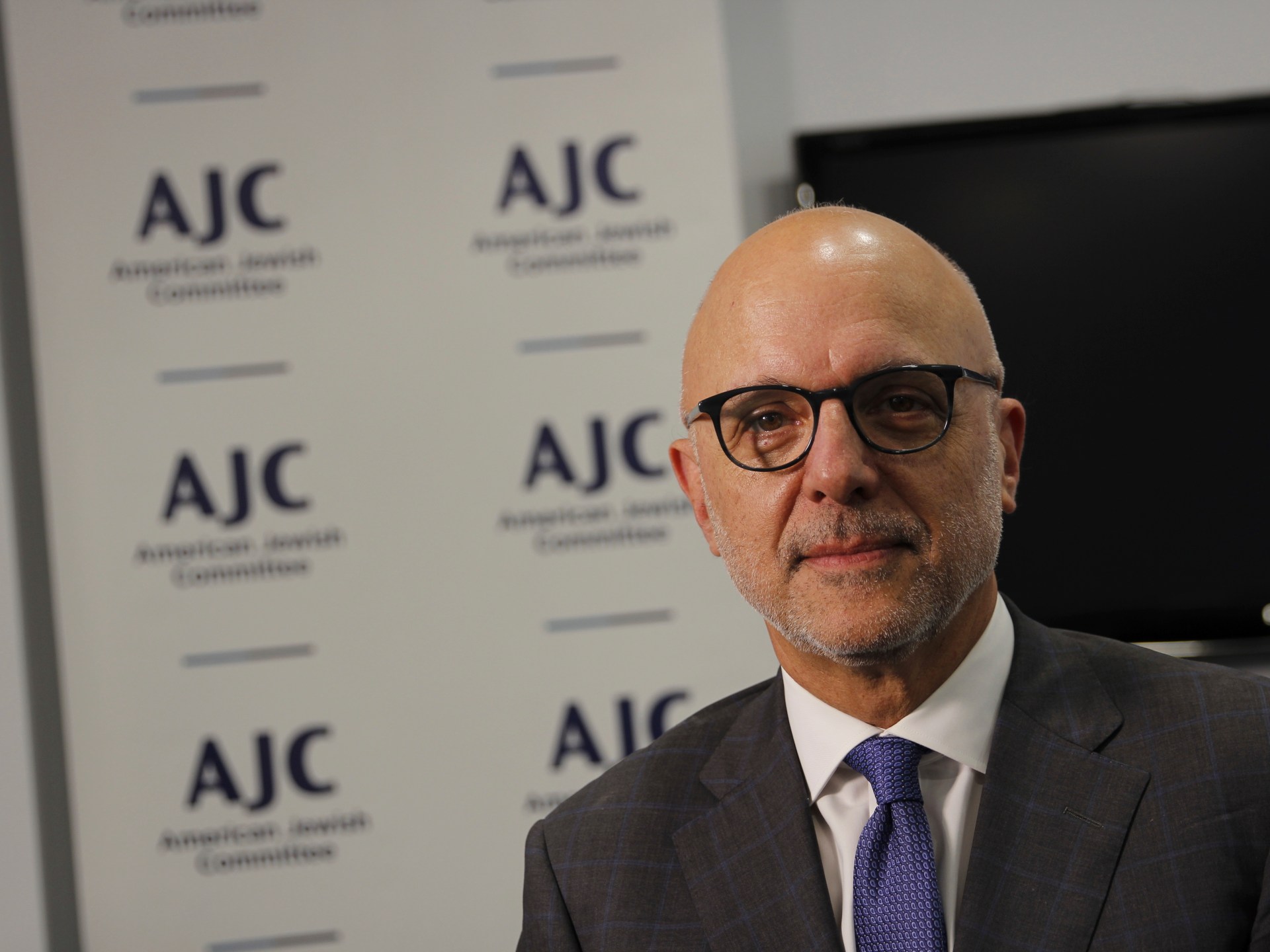Steps Towards a Future of Lead-Free Drinking Water — Global Issues
Chapel Hill, NC, US, May 23 (IPS) – At the UN Water Conference in March 2023, the Water Institute at the University of North Carolina (UNC) along with several key partners, including UNICEF, Water Aid, the World Health Organization, and the governments of Ghana, Uganda, and South Africa, among others, organized a session centered around the elimination of lead in drinking water across the globe.
During the session, the various institutional partners articulated a vision of eliminating lead from all drinking water supplies by 2040. This vision, dubbed the “Global Pledge to Protect Drinking Water from Lead” (Lead-Free Water Pledge, for short), begins by outlining concrete steps for phasing out lead-leaching materials for new drinking water systems by 2030.
The pledge’s two-pronged approach recognizes the complexity of eliminating lead from drinking water systems. On the one hand, lead is a problem in existing systems. On the other hand, many new drinking water systems are being constructed as much of the Global South develops and urbanizes; these new systems are being constructed with parts or components that contain and leach lead into the water.
As evidenced by efforts to address lead in drinking water in the United States, the first step of identifying areas affected by lead contamination is both financially and technically onerous. Because mitigation is more expensive than prevention, ensuring that new water systems are constructed in accordance to standards the prevent the leaching of lead is low-hanging fruit in the broader effort to eliminate lead from drinking water.
Lead in Drinking Water is a Global Concern
Globally, exposure to lead is responsible for a significant burden of disease, accounting for an estimated 0.9 million deaths per year and 30% of developmental disability from unknown origins. Young children and infants are particularly sensitive to the harmful effects of lead. Current statistics suggest that approximately one in three children worldwide have elevated blood lead levels.
Lead is seldom, if ever, found to be naturally occurring in bodies of water, such as rivers or lakes. Lead is also rarely present in water leaving water treatment plants. Yet, lead in drinking water is a global concern.
Lead in drinking water constitutes a signification portion of a person’s exposure to lead in countries around the world. In the US, lead in drinking water is a significant issue that affects households in almost every state. The Environmental Protection Agency (EPA) estimates that drinking water can account for at least 20% of a person’s total exposure to lead; this estimate can increase up to 60% for infants who mostly consume mixed formula.A 2021 study by researchers at the University of North Carolina at Chapel Hill examining water supplies in sub-Saharan found that nearly 80% of drinking water systems were contaminated with lead. Of these systems, approximately 9% of drinking water samples across several countries had lead concentrations that exceeded the World Health Organization (WHO) guideline value of 10 parts per billion (ppb).
Lead contamination of drinking water supplies is entirely preventable: lead finds its way into drinking water from lead-containing plumbing materials used throughout drinking water systems. Notably, lead can leach into water from lead-based solder used to join pipes, lead-containing brass or chrome-plated brass faucets and fixtures, and the wearing-away of old lead service lines.
Regulations around Lead in Drinking Water are Insufficient
There is no safe level of exposure to lead. Even low levels of exposure can be harmful to human health and can cause damage to the central and peripheral nervous system, cognitive impairments, stunt growth, and impair the formation and function of blood cells, among other harmful effects.
Many countries around the world have regulations in place to reduce or limit the amount of lead in drinking water. The European Union, China, and Japan, for instance, all have statutory limits of 10 ppb; Canada and Australia have published guidelines recommending limits of 5 and 10 ppb, respectively. In the US, the EPA set the maximum contaminant level for lead at 15 ppb.
Except for the US, however, none of the existing national-level regulations have goals place to eliminate lead from drinking water. In 2022, the EPA issued the Revised Lead and Copper Rule (LCR) setting the maximum contaminant level goal for lead in drinking water at zero. As part of the revised LCR, water systems have to create lead service line inventories to better identify areas where they may possible lead in drinking water. Creating this inventory, however, is proving to be financial and technologically onerous for many water systems because it requires both a significant financial investment and having access to staff with technical expertise in GIS or data modeling.
Delivering on the Pledge
The Lead-Free Water Pledge is not the first global initiative to reduce exposure to lead. Notably, one of the most successful public health initiatives over the previous century has been to remove the use of lead in gasoline. For context, lead was commonly used as an additive in gasoline since the 1920s when it was discovered that the addition of lead reduced engine knock allowing engines to run more smoothly.
Though the harmful health effects of lead were almost immediately apparent, it took close to a century for global action to gather any meaningful momentum to eliminate its use. As of 2021, all but one country has banned the use of lead as an additive in fuels because of concerted efforts by the Partnership for Clean Fuels and Vehicles and other like-minded organizations.
As illustrated by the effort to remove lead from gasoline, delivering on the pledge to remove lead from drinking water by 2040 will require non-trivial amounts of effort. First, countries must sign on to the pledge and take it on as a priority. So far, three African countries—Ghana, Uganda, and South Africa—have made firm commitments to eliminating lead from drinking water by 2040. Though the United States’ policies are fully consistent with the Lead-Free Water Pledge, it has yet to commit.
Second, there must also be a commitment mechanism in place to ensure countries that sign on to the pledge take meaningful actions towards eliminating lead in drinking water. National governments will have to set up systems to ensure new treatment plants follow international standards, support the training and certification of professionals to oversee the construction of safe drinking water systems, ensure affordable access to fittings and other plumbing materials that meet standards for lead in drinking water, among other commitments.
The dual problem of both gathering momentum and implementing a commitment mechanism to ensure progress is not unique to the Lead-Free Water Pledge: the UN Water Conference in 2023 culminated in over 200 similar sorts of commitments, pledges, or agreements.
Given that the next UN Water Conference of the sort that took place in March 2023 wouldn’t take place until 2030 (at the earliest), the need for spaces that decision-makers and researchers from different parts of the world working on particular issues, such as the elimination of lead from drinking water, can use to come together to flesh out details, report on progress, and hold each other accountable is paramount.
A logical step in the right direction would be to take advantage of all the current meetings to create the space for meaningful discussions and actions around lead. To that end, the UNC Water & Health conference is ideally suited to serve as a space to follow-up on the Lead-Free Water Pledge and other commitments made at the UN Water Conference. The yearly conference hosted by the Water Institute each fall is already a gathering place for experts on water sanitation & hygiene in both developing and developed countries.
As long as lead is present in drinking water, we as a society are condemning millions (if not billions) of people to futures of health issues and reduced earning potentials in the decades to come. The vision articulated by the Lead-Free Water Pledge is one of many necessary steps that we as a global society must take to ensure access to safe drinking water to people around the world. We are grateful for the commitments made by Ghana, Uganda, and South Africa and are proud that Africa is taking the lead in tackling such a fundamental issue to ensure a more water secure future.
Dr. El-Khattabi is the Associate Director for Research and Data at the Environmental Finance Center at the University of North Carolina at Chapel Hill.
Dr. Salzberg serves as the Director of the Water Institute and the Don and Jennifer Holzworth Distinguished Professor in the Department of Environmental Science and Engineering in the Gillings School of Public Health at the University of North Carolina at Chapel Hill.
© Inter Press Service (2023) — All Rights ReservedOriginal source: Inter Press Service
Check out our Latest News and Follow us at Facebook
Original Source







